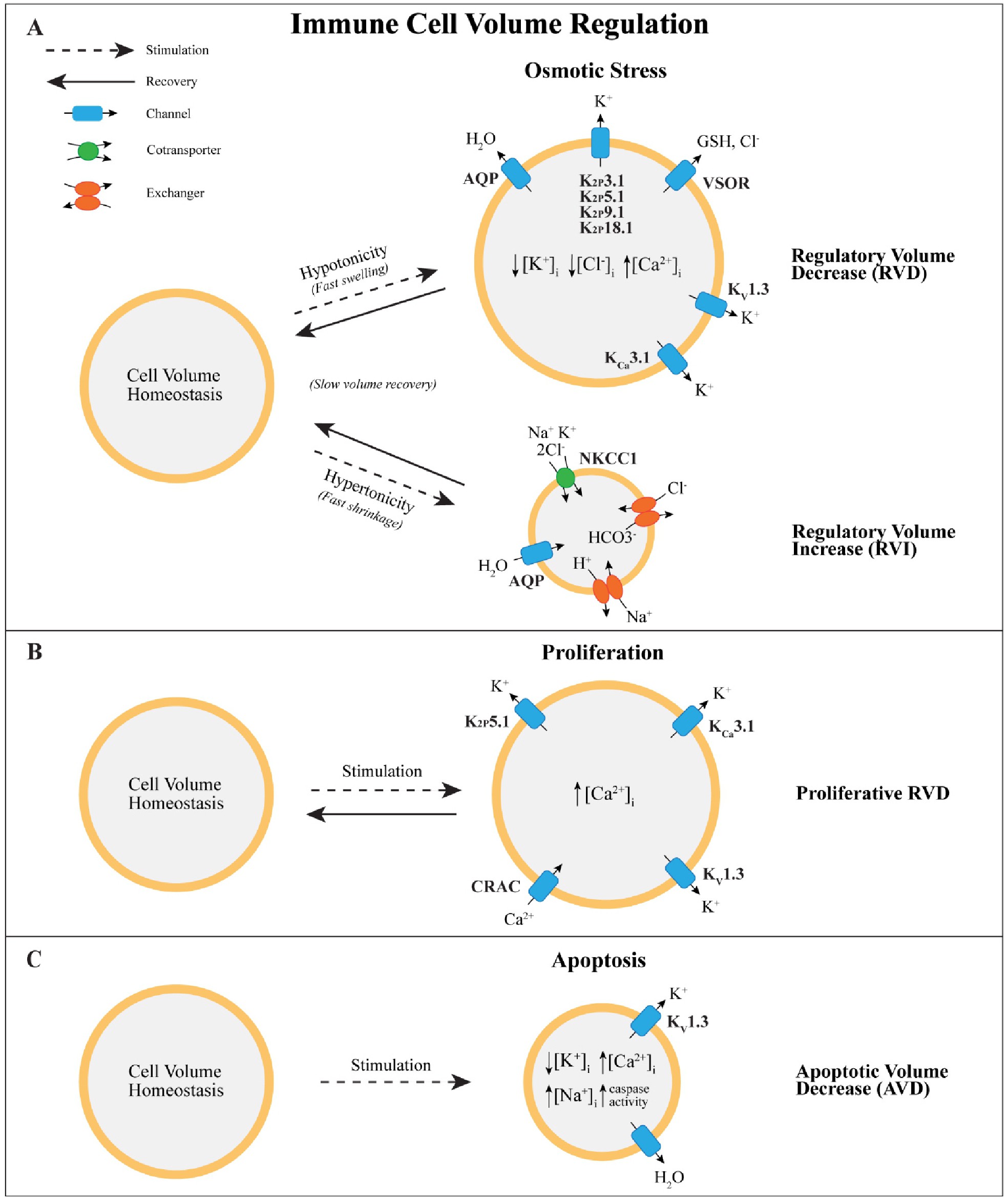Fig. 1. A summary of the ion channels utilized during immune cell volume regulation, apoptosis, and proliferation. (A) Pathways of osmoregulation through RVD and RVI are shown. Hypotonic stress causes immune cell swelling. To accomplish RVD, AQP water channels mediate water efflux. K2P3.1, K2P5.1, K2P9.1, and K2P18.1 regulate K+ efflux. VSOR Cl- channels control the efflux of anions and organic compounds to reduce cellular volume. [Ca2+]i increases and activated KCa3.1. Cl- conductance depolarizes the cell membrane due to Cl- efflux and stimulates KV1.3 along with K+, Cl-, and water efflux to restore normal cellular volume. (B) Mechanisms of immune cell proliferative volume regulation. K2P5.1, KCa3.1, and KV1.3 control K+ efflux through RVD during immune cell proliferation. K+ efflux via KV1.3 hyperpolarizes the cell membrane, leading to an increase in [Ca2+]i. Binding of Ca2+ to CaM stimulates KCa3.1 during cell proliferation. (C) A summary of ion channels utilized during immune cell AVD. KV1.3 mediates K+ efflux. Increased [Ca2+]i, [Na+]i, and caspase activity is seen during immune cell apoptosis, while an overall reduction in [K+]i occurs.
